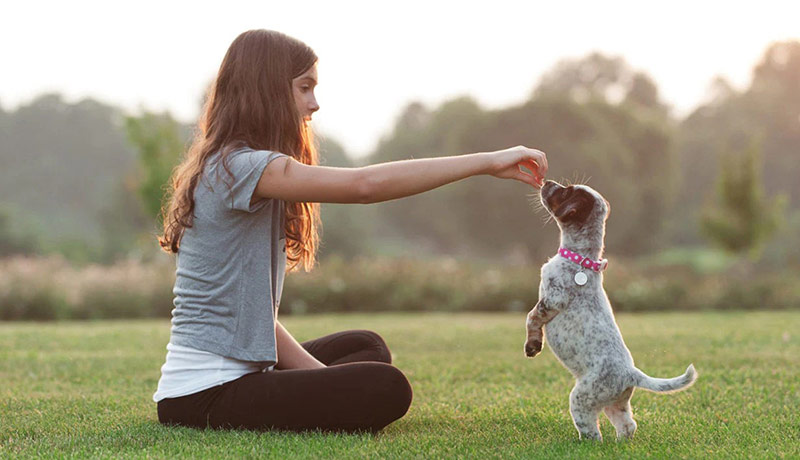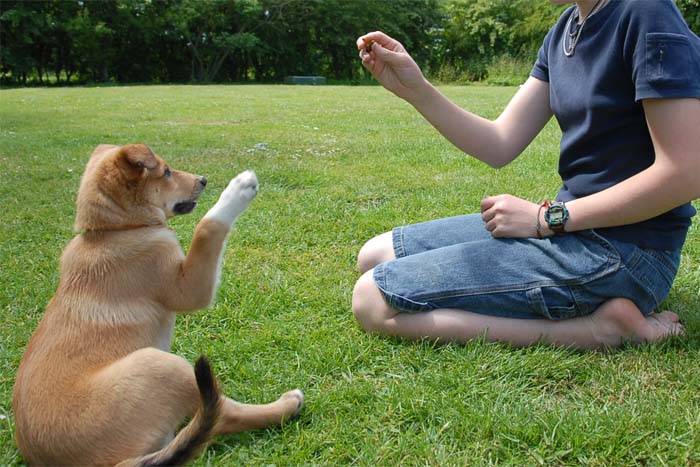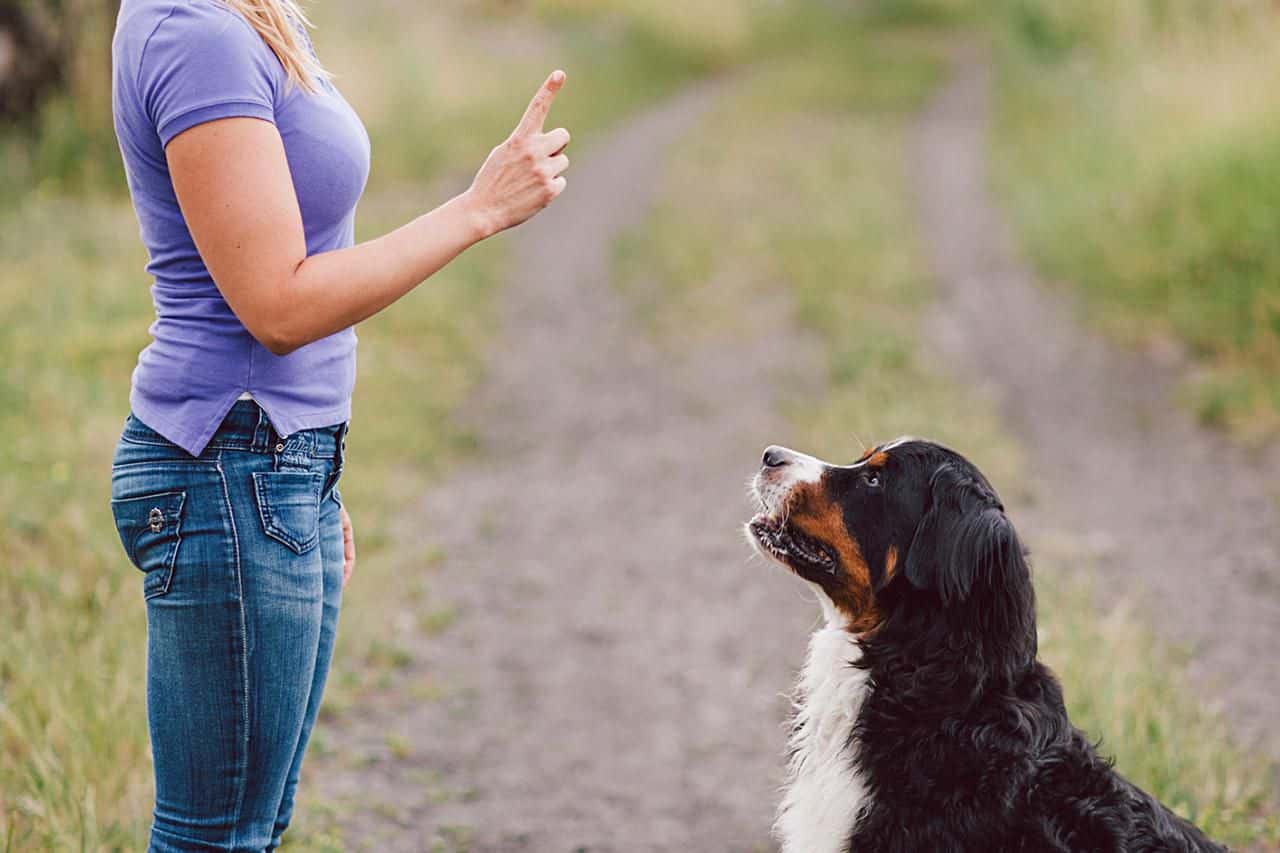Tips for training your dog to obey

Dogs and humans are very different animals. Although officially "man's best friend," dogs have a number of habits that are innocent enough to be offensive, such as jumping up to greet, barking, digging and chewing – these can make living with them extremely difficult! To get the most out of your relationship with dogs, you need to teach them some important skills to help them live in harmony in your household. Learning how to train your dog to obey will improve your and your dog's life, strengthen your bond, and ensure your dog's safety – and it can be a lot of fun. Dogs are often curious and the key to success is good communication.
How to train obedient dogs?
Regardless of the methods and techniques you use, effective obedience training focuses on one thing: controlling the consequences of your dog's behavior. If you want to influence your dog's behavior, you need to:
Reward behaviors you enjoy.
Make sure behaviors you don't like aren't rewarded.
Understand how your dog learns
To communicate clearly and consistently with your dog, you need to understand how they learn. Dogs learn through the immediate consequences of their behavior. The nature of those consequences determines how they will behave in the future. Dogs, like other animals (including humans), work to get the good and avoid the bad in life. If a behavior leads to something like delicious food, a belly rub, playing with other dogs or picking up a game with the owner – your dog will do it more often. . On the other hand, if a behavior leads to unpleasant consequences, such as being neglected or losing things that the dog finds interesting – they will perform the behavior less often.
Praise when the dog does the behavior you want it to do
You can easily use treats, games, and compliments to teach your dog to sit when people approach while walking the neighborhood. If your dog is sitting, he won't pull you towards people, jump up when they get close enough, nibble on their legs and arms, etc. It's a pretty effective way of training that doesn't have to be painful or threatening.

If you can teach your dog polite manners without hurting or scaring them, why not do it? Instead of punishing your dog for all the things you don't want them to do, focus on teaching your dog what you want them to do. When your dog does something you like, convince him to do it again by rewarding them with something they love. You will get the job done without damaging the relationship between you and your best friend.
If you don't like the behavior, remove the reward
The most important part of obedient dog training is teaching them that they get paid to do what you like. But your dog also needs to know that they don't get paid for doing things you don't like. Fortunately, stopping unwanted behavior doesn't have to be painful or threatening. You just need to make sure that behavior you don't like isn't rewarded. Most of the time, a dog's motives are no mystery.

Dogs simply do what works! For example, dogs jump on people because people notice them. They can learn not to jump if we ignore them when they jump. It can be as simple as turning away or staring up at the sky when your dog jumps up to greet or play with you. As soon as your dog sits down, you can give them the attention they crave. If you follow this plan, your dog will learn two things at once. Doing something you like (sitting) works effectively to get what your dog wants (attention) and doing something you don't like (jumping) always results in losing what a dog wants.
Control the consequences effectively
As you teach your dog what you want them to do and don't want them to do, keep these guidelines in mind:
Consequences must be received as soon as the dog does in the present. Unlike us, dogs cannot make connections between events and experiences that have been separated over time. For your dog to connect something he does with the consequences of that behavior, the consequences must be immediate. If you want to stop your dog from doing something, you have to catch them with their paws in the cookie jar. For example, if your dog gets too rough during play and grabs your arm, try saying “OUCH!” right at the moment you feel your dog's teeth touching your skin. Then abruptly ended playtime. The message was immediate and clear: It's no longer fun to bite into human skin. Rewards for good behavior must also come shortly after the behavior occurs. Suppose a child in the classroom correctly answered the teacher's question, got up from the table, sharpened a pencil, and then punched another child in the hand on the way back to his seat. Then the teacher said, “Good job, Billy!” and give that child a candy. What does Billy get candy for? Time is decisive. So be prepared to reward your dog with delicious treats, praise, petting and play as soon as they do something you enjoy.
Consequences should be consistent when training your dog, you and others interacting with the dog – should react in the same way to the dog's actions. For example, if you occasionally pet your dog when it jumps up to greet you but sometimes yell at them, then the dog is sure to get confused. How do they know when to jump and when not to?
Be a good leader
Be a benevolent boss, not a bully. Good leadership is not about dominance and power struggles. It's about controlling a dog's behavior by controlling their access to the things they want. YOU have opposable thumbs to open the can of dog food, turn the doorknob and throw a tennis ball! Use them to your best advantage. If your dog wants to go outside, ask them to sit before you open the door. When dogs want dinner, ask them to lie down. Does the dog want to go for a walk? If they jump on you out of excitement, calmly wait until they sit down. Then, tie the dog to a leash and take them for a walk. Your dog will happily work for everything he loves in life. They can learn to do what you want to get what they want.
Training new skills
Dogs can learn an impressive array of obedience skills and entertaining tricks. Deciding what you want your dog to learn will depend on your preferences and lifestyle. If you want your dog to behave politely, you can focus on skills like sitting, lying down, waiting at the door, leaving him, running until called, and staying. If you want to enhance the fun of hanging out with your dog, you can train them to walk politely on a leash without pulling. If you have a high-energy dog and want places to have fun, you can teach them how to play fetch, tug-of-war, or participate in canine sports, such as agility, rally obedience, freestyle and catch the ball.
Training tips
Once you've selected a few skills that are right for your dog, you'll be ready to start training. To maximize your dog's learning potential we give you some basic tips to quickly improve your dog's skills.
When teaching new skills, keep training sessions short and light. Like children, dogs don't have very long attention spans. There's no hard-and-fast rule, but an ideal session should last 15 minutes or less. During each practice session, you can practice on one skill or switch between several different skills.
Stop when you're about to end training sessions with a good skill you know your dog can do well, and remember to stop before either of you gets tired, bored, or frustrated.
Take small steps: Dogs, like humans, learn best when new tasks are broken down into small steps.
Practice only one part of the skill at a time: Start with just one part of the skill and when your dog has mastered it, add another.
If you run into problems, go back a few steps: If you're training your dog to do something new and the dog isn't making progress, you may have increased the difficulty of the skill too quickly.
Practice anywhere, with everyone: If you learn that two plus two equals four in a classroom, you'll take that information with you wherever you go.
Use Real Rewards: Be sure to reward your dog with things they actually find rewarding.
Be patient: Training your dog will take time and effort – but it can be a lot of fun for you and them. And your hard work will pay off. With patience and persistence, you and your dog can accomplish great things together.
Let your dog simply be a dog
Many behavior problems can be prevented by providing acceptable “legal” ways for dogs to express their natural behaviors. There are some things that dogs just need to do. So, instead of trying to get your dog to completely stop chewing, gnawing, and fussing, move these actions in the right direction.